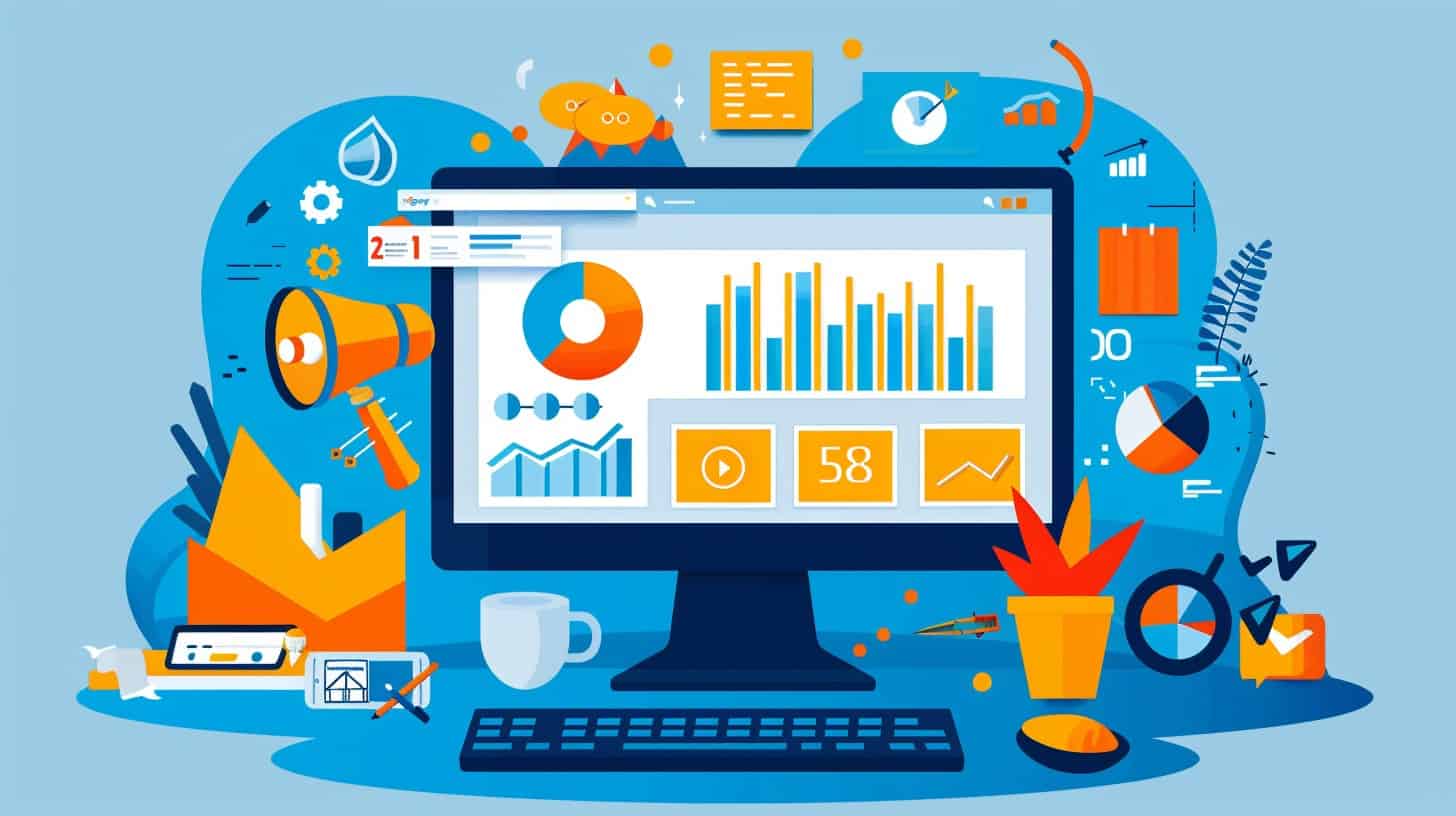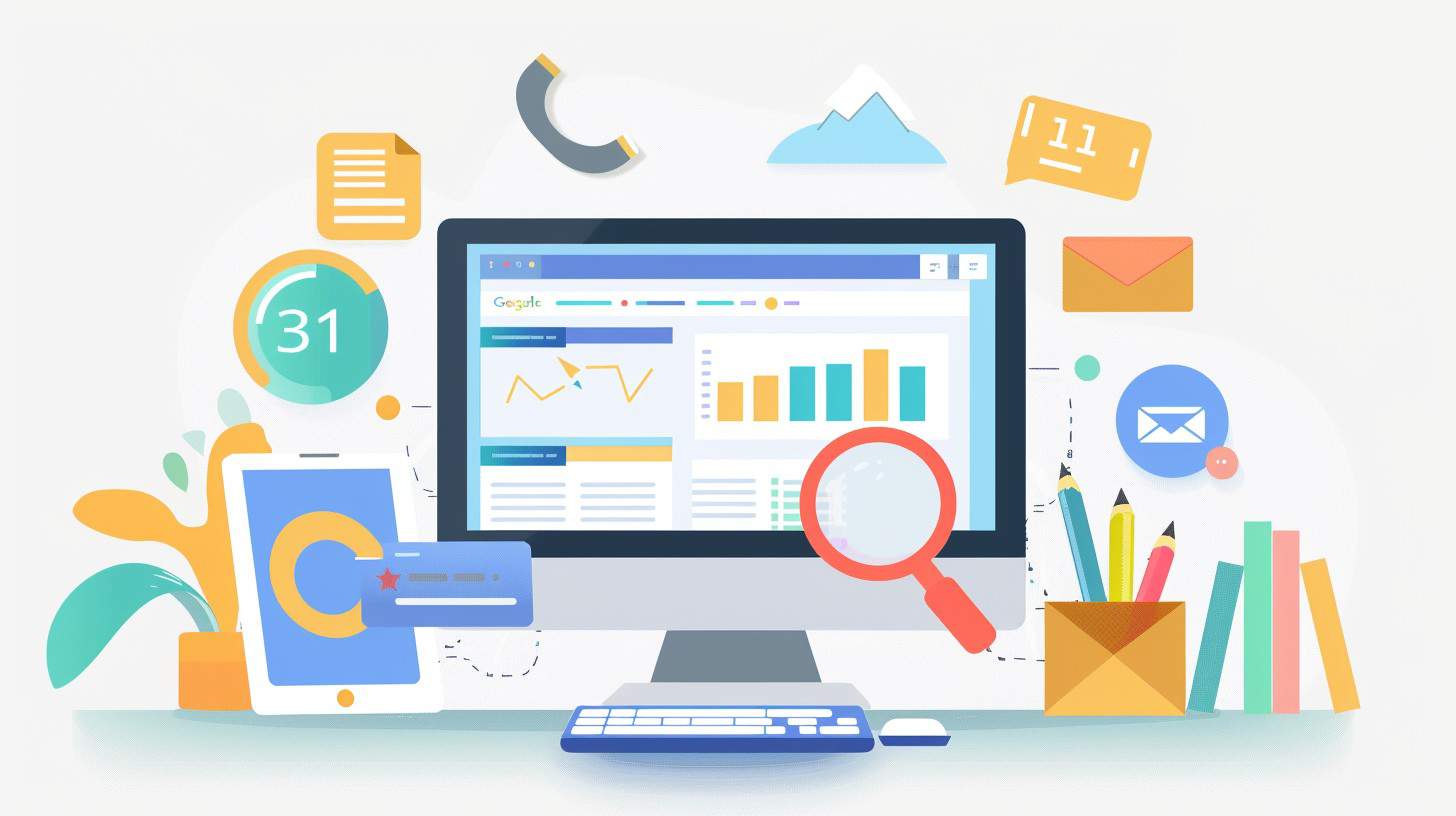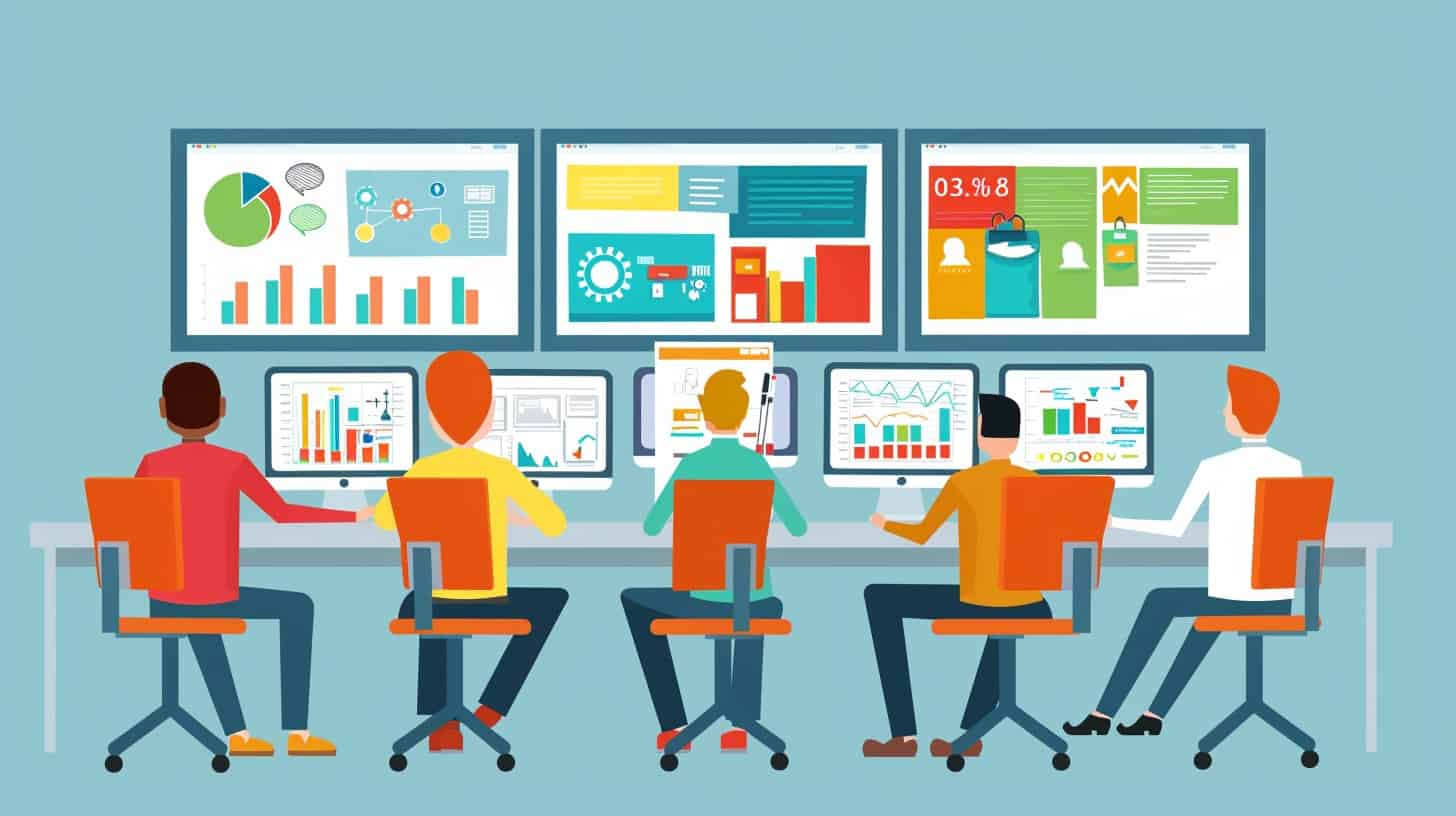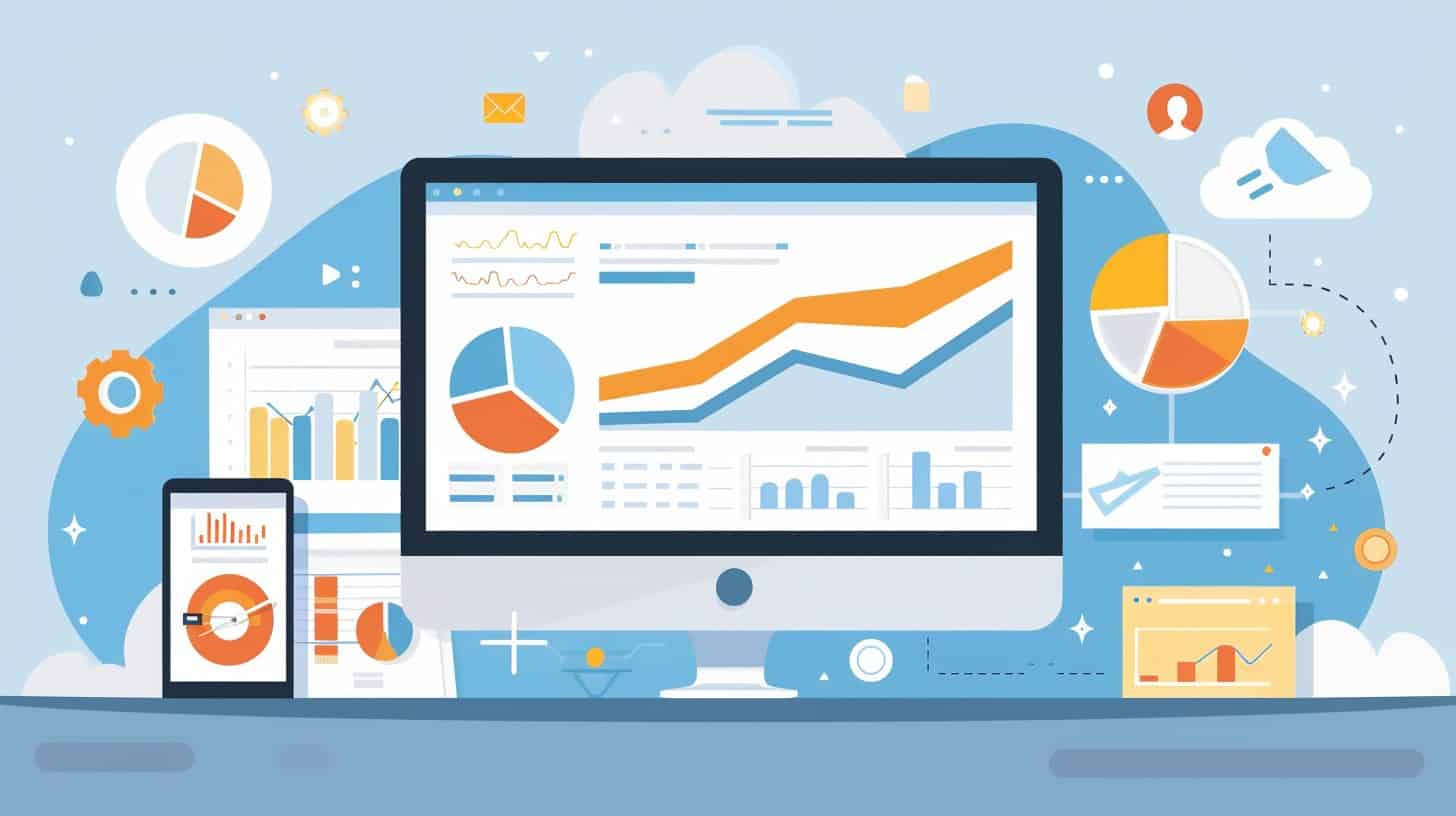Struggling to elevate your website’s visibility? You’re not alone. Many tech enthusiasts grapple with this challenge daily. The key lies in mastering search engine optimization (SEO) techniques that can catapult your site up the search engine rankings, making it easy for users to find you amidst the vast expanse of the web.
With experience in digital marketing and content strategies, I’ve compiled a comprehensive guide featuring 14 proven tips for SEO success. From keyword research to leveraging social media platforms like LinkedIn and Twitter—this blog will empower you with practical steps to boost your site’s presence.
Ready to transform your online game? Keep reading!
Key Takeaways
Use high-quality, user-focused content and update old posts to maintain relevance and drive traffic. Integrate key phrases naturally without stuffing them. Include videos for better engagement.
Conduct detailed keyword research using tools like Google Keyword Planner, Moz, and Ahrefs. Focus on long-tail keywords and local terms to reduce competition. Track performance using Google Analytics.
Apply on-page optimization techniques such as clear meta tags, structured URLS, internal linking with varied anchor texts, image alt text descriptions, mobile responsiveness improvements, fast page loading times through compressions.
Build a robust backlink profile by focusing on obtaining quality links from reputable sites. Engage in guest blogging and social media interactions to generate backlinks that boost your site’s credibility.
Register with Google Search Console and claim your Google Business Profile for local SEO benefits. Ensure accurate business details are updated regularly along with encouraging positive customer reviews.
Table of Contents
Understanding Website Visibility

Website visibility means how easily users can find a site on search engines like Google and Bing. High website visibility leads to more clicks, making it easier for customers to access the content they need.
Over 64% of the world’s population is active on social media, which also boosts website visibility.
High-quality content prioritizes experience, expertise, authoritativeness, and trustworthiness. Great content helps search engines rank your site higher in SERPs (search engine results pages).
Sponsored content shared through social media apps like TikTok or Facebook Messenger can further improve visibility. These platforms boast enormous user bases and highly interactive environments, making them ideal for reaching a wide audience quickly. By strategically placing sponsored content, you can tap into the massive engagement that these apps generate daily.
For instance, TikTok’s algorithm is designed to push engaging content to users’ “For You” pages, exponentially increasing the chances of your sponsored post going viral. Additionally, Facebook Messenger allows for direct communication with potential customers, creating a personalized and immediate connection. Sponsored content on these platforms not only enhances brand awareness but also drives significant traffic to your website, making it easier for users to find and engage with your content. By leveraging the unique features and user dynamics of TikTok and Facebook Messenger, you can significantly boost your site’s online presence and visibility.
Next up: Proven Techniques to Improve Website Visibility….
Proven Techniques to Improve Website Visibility

Create engaging content that answers users’ questions… Use keywords effectively to attract more visitors.
High-Quality, User-Focused Content
High-quality content needs to be informative, engaging, and SEO-optimized. Use specific keywords like “search results” and “content marketing”. Headlines should be clear and compelling—using numbers can boost click-through rates.
Intros must hook the reader within three paragraphs by including quotes from industry leaders. Keep your content fresh; update old posts regularly to maintain their relevance.
Include video content for better SEO success. Search engines favor videos because they improve user engagement. A robust technical SEO strategy is necessary too—optimize meta descriptions and use alt text for images.
High-quality content also means easy readability, with short sentences and active voice throughout. This helps drive site traffic faster than any black-hat technique could achieve.
Keyword Research and Optimization
Keyword research and optimization target the right audience and increase website visibility. Using tools like Moz, Ahrefs, and Google Keyword Planner can help.
- Understand your Audience: Study what your audience searches for… Use keywords that match their language.
- Use Tools for Insights: Use Google Keyword Planner to find popular search terms. Moz Keyword Explorer and Ahrefs offer detailed data on keyword volume and difficulty.
- Analyze Competitors: Look at competitors’ keywords using tools like Moz or SpyFu. Identify gaps where you can outrank them.
- Focus on Local Keywords: Prioritize local keywords to reduce competition and attract nearby users. Examples: “best pizza in New York” or “tech repair in San Francisco.”
- Target Buying Intent Keywords: Choose keywords that show buying intent, like “buy laptop online” or “affordable SEO services.”
- Optimize Meta Tags: Include primary keywords in meta titles and descriptions… This helps search engines understand your page content.
- Incorporate Keywords Naturally: Integrate keywords into your content organically… Avoid keyword stuffing as it harms readability and search rankings.
- Use Long-Tail Keywords: Focus on long-tail keywords, such as “how to start a tech blog,” which often have less competition but higher relevance.
- Monitor Keyword Performance: Track keyword performance with Google Analytics or other SEO tools… Adjust your strategy based on results.
- Update Content Regularly: Refresh content with new information and trending keywords… This keeps it relevant to both users and search engines.
- Leverage LSI Keywords: Use Latent Semantic Indexing (LSI) keywords related to your main keyword for better context… Example: For “SEO”, include terms like “search engine optimization”, “backlinks”, etc.
- Utilize Anchor Texts Properly: Use varied anchor texts for internal linking… Include primary and secondary keywords naturally within texts.
- Research Seasonal Trends: Identify seasonal trends using Google Trends… Target specific times of the year when certain searches spike.
- Avoid Black-Hat Techniques: Steer clear of black-hat SEO tactics like keyword stuffing, cloaking, and using irrelevant meta tags… They harm your site’s reputation with search engines.
On-Page Optimization
On-page optimization ensures web pages rank higher in search results. It involves several elements that geeks should follow:
- Content Quality: Create valuable, user-focused content. Use clear language and address specific topics.
- Keyword Placement: Integrate target keywords naturally into the text. Avoid keyword stuffing.
- Meta Tags: Use descriptive title tags and meta descriptions. Include primary keywords to improve click-through rates.
- URL Optimization: Keep URLs short and include relevant keywords. Avoid using long strings of numbers or irrelevant characters.
- Internal Linking: Link to other pages on your site using anchor text with keywords. This helps crawlers index your site better.
- Header Tags: Use H1 tags for main titles and H2-H6 tags for subheadings. Structure content logically for easier reading.
- Image Optimization: Use descriptive alt text with keywords for images. Compress files to reduce loading times without losing quality.
- Mobile Friendliness: Ensure your site is responsive and performs well on mobile devices, as Google favors mobile-first indexing.
- Page Speed: Improve load times by minimizing HTTP requests, enabling caching, and using a Content Delivery Network (CDN).
- User Experience (UX): Design intuitive navigation and fast-loading pages to enhance usability metrics which search engines track.
- Schema Markup: Add schema markup to help search engines understand your content contextually, increasing chances of rich snippet display.
- Outbound Links: Link to high-authority websites where relevant, as this can signal credibility to search engines.
- Social Media Sharing Buttons: Incorporate social sharing buttons prominently to increase engagement and potential backlinks from social platforms like Pinterest or Facebook.
- Regular Updates: Regularly update content to keep it fresh and relevant; this signals activity and relevancy to search engines like Google.
Technical SEO Optimization
- Technical SEO optimization makes your website faster and more user-friendly. It greatly improves your organic rankings on search engines.
- Improve website speed by choosing a performance-focused hosting provider like Cloudways or SiteGround.
- Use a content delivery network (CDN) to serve content quickly across the globe.
- Reduce HTTP requests by combining CSS and JavaScript files.
- Use caching mechanisms to load pages faster for returning users.
- Avoid unnecessary plugins, which can slow down your site. Stick with essential plugins only.
- Ensure all images have alt text to make the website more accessible and improve crawlability.
- Use appropriate headings (H1, H2, H3) to structure content clearly for both users and search engines.
- Provide alternative style buttons for better accessibility.
Maximize efforts through precise technical SEO practices as outlined above.
Robust Backlink Profile
Backlinks boost your website credibility.7 They also improve search engine rankings.
- High-Quality Backlinks: Quality matters more than quantity. Links from reputable sites carry more weight.7
- Relevant Sites Only: Focus on getting links from related websites. Irrelevant backlinks harm your SEO.8
- Avoid Low-Quality Backlinks: Bad links from spammy sites can hurt your organic search ranking.
- Dofollow Backlinks: These pass link equity to your site, improving its authority and rankings.
- Guest Blogging: Write for popular blogs in your niche. It helps build quality backlinks and brand recognition.
- Social Media Engagement: Share content on social media platforms like Facebook, Twitter, and LinkedIn for more backlink opportunities.
- Influencer Partnerships: Collaborate with influencers who can link back to your site, boosting visibility.
- Local SEO Tactics: Get listed in local directories like Google My Business and Yelp for local backlinks.
- Create Shareable Content: Develop content like infographics that people want to share and link to.
- Monitor Backlink Profile Regularly: Use tools like Google Search Console or Moz to check the quality of incoming links regularly.
- Broken Link Building: Find broken links on other websites in your niche and suggest replacing them with a link to your content.
- Conduct Keyword Research: Optimize anchor texts with relevant keywords, ensuring they are natural and not overstuffed.
Using these steps ensures a strong backlink profile, which enhances both visibility and authority online significantly for tech-oriented platforms such as WordPress blogs or ecommerce sites looking to maximize their digital marketing strategy effectively through SEO efforts.
Utilizing Social Media
Transitioning from backlinks, let’s dive into social media. Social media is a powerful tool for increasing website visibility. Over 64% of the world’s population uses platforms like Facebook, YouTube, and WhatsApp daily.
Utilize third-party tools such as Buffer to analyze engagements and schedule posts during peak hours. Post web content on various social media accounts to reach more active users. Engage with your audience by responding to comments and sharing user-generated content.
This boosts brand awareness and creates organic searches for your site. Collaborate with social media influencers to amplify your reach further.
Enhancing Visibility on Google and Bing

Get your site seen by using Google Search Console and claiming your Google Business Profile.
Register Your Website With Google Search Console
Register your website with Google Search Console to boost visibility. Follow these steps:
- Go to the Google Search Console: Visit the official site at search.google.com/search-console.
- Sign In: Use your Google account to log in.
- Add Your Website: Click on “Add Property”. Enter your website’s URL.
- Verify Ownership: Choose a verification method (HTML file upload, HTML tag, Google Analytics). Complete one method to verify ownership.
- Submit Sitemaps: Navigate to the “Sitemaps” section and submit your sitemap by entering its URL (e.g., www.yoursite.com/sitemap.xml).
- Check Mobile Usability: Ensure your site is mobile-friendly by reviewing the “Mobile Usability” report.
- Monitor Performance: View reports under “Performance”. Check metrics like total clicks, impressions, and average position in search results.
- Fix Issues: Go to “Coverage” and address any detected errors like 404 pages or server issues.
- Enhance SEO with Keywords: Analyze which keywords drive traffic from the “Performance” report.
- Setup Alerts for Problems: Enable email notifications for critical issues or updates from Google Search Console.
These steps will ensure that Google indexes your site effectively and alerts you about critical updates or problems to fix immediately.
Claim Your Google Business Profile
Claiming your Google Business Profile is vital for local SEO. It helps people find your business easily.
- Sign Up for Google My Business: Head to the Google My Business website and click “Start Now.” Use your business email.
- Enter Your Business Info: Type in your business name, address, type, and phone number. This ensures accuracy.
- Verify Your Business: Google sends a postcard with a code to verify. Enter this code on Google My Business to complete verification.
- Add Relevant Keywords: Use keywords like “tech blog” or “local search” in your description. This boosts visibility.
- Update Regularly: Keep details current—change hours, add new services, or post updates every week.
- Encourage Customer Reviews: Ask customers to leave reviews after service or purchase. Positive reviews improve rankings.
- Post Photos and Updates: Upload photos of your store, products, or events regularly. Fresh content attracts more views.
- Use Features Like Posts and Q&A: Share news or special offers using the Posts feature; respond to questions in the Q&A section.
Follow these steps for better online presence… Get started now!
Follow Google’s SEO Advice
Google provides SEO guidelines that improve website visibility. Follow these steps for better results:
- Create Quality Content: Write blog posts and product guides.
- Use Keywords Wisely: Perform keyword search to find relevant terms.
- Optimize Your Meta Tags: Include title tags and meta descriptions.
- Improve Website Speed: Choose cloud hosting for faster load times.
- Ensure Mobile Compatibility: Make your site mobile-friendly.
- Build Strong Backlinks: Get links from reputable sites.
- Register on Google Search Console: Submit your sitemap for indexing.
- Claim Your Google Business Profile: Enhance local searches with accurate info.
- Utilize Analytics Tools: Use website analytics to track performance.
- Implement Technical SEO Fixes: Improve your site’s structure and crawling ability.
- Write User-Focused Content: Cater content to your target audience for engagement.
- Implement Social Sharing Buttons: Make it easy to share on social media platforms.
- Avoid Duplicate Content: Ensure unique content across pages to prevent penalties.
- Regularly Update Content: Keep information current and relevant for users and search engines alike.
Local SEO Techniques

Local SEO helps your site show up more in your community. Use local keywords and improve for local searches to attract nearby customers.
Prioritize Local Keywords
Local keywords are crucial for SEO. Over 40% of searches are local. Use free tools like Google Keyword Planner, Ubersuggest, and Google Trends to find these keywords. Paid options include Semrush and Ahrefs.
Focus on keywords with buying intent that match your business needs.
Target the right terms for local searches reduces competition, making it easier to stand out. Incorporate these keywords into web design elements such as title tags and meta descriptions.
Make sure they appear naturally in high-quality content, too.
Optimize for Local Searches
After prioritizing local keywords, optimizing for local searches is key. Use schema markup to make your site more visible in specific geographic areas. Register with sites like Yelp and Tripadvisor to boost trust.
Get listed on Yellow Pages. These steps improve credibility fast.
Focus on building local links from relevant websites, which boosts both credibility and SEO performance. Encourage customers to leave reviews online; this influences search rankings and business reputation big time! Ensure your website is mobile-friendly, since many users search locally using their phones.
Advanced Strategies to Boost Online Presence
Coordinate your SEO with social media to reach a bigger audience. Use influencers and paid ads to drive traffic and get noticed quickly.
Coordinate SEO with Social Media Efforts
Use social media platforms to boost your SEO. Over 30% of people use them as search engines. Share content with keywords, links, and hashtags to improve visibility. Optimize profiles for better search results.
Define KPIs like site traffic, conversions, and customer satisfaction. Business profiles give access to analytics tools—track discovery metrics on Semrush for insights. Understand your target audience for effective social media SEO strategies.
Leverage Influencers and Paid Ads
Partner with top influencers to boost your brand. Influencers can promote your tech blog, webinars, or products to their large audiences. This drives more traffic and clicks on your website.
Examples include collaborating with popular YouTubers or Instagram figures in tech.
Paid ads like Google Adwords and Facebook Ads also help increase visibility fast. Create targeted ad campaigns focusing on keywords like “click-throughs” and “cost per click.” Use these tools for reaching specific groups interested in online shopping, SEO, and mobile-friendly websites.
Pairing both strategies leads to better results—more visitors and potential subscribers!
Post Content During Peak Hours
Post during peak hours to catch busy readers. These are times when people are most active online. For example, 6-9 AM and 5-8 PM often work well. Use analytics tools to find your audience’s peak time.
SEO (search engine optimization) improves visibility by timing posts right. Social media like Facebook and Twitter allow scheduled posts. OptinMonster can help track engagement minutes after posting at these optimal times, boosting interactions effectively.
People Also Ask
What are some proven tips to increase website visibility?
Use keyword optimization, create a strong landing page, and post content during peak hours. Also, use Google Ads and pay-per-click (PPC) strategies.
How can starting a tech blog help with SEO success?
Starting a tech blog can improve your brand identity and attract target audiences by providing valuable information on the internet. It helps you rank better on search engine results pages (SERPs).
Why is keyword optimization important for SEO?
Keyword optimization ensures that your site appears in relevant search engine result pages. Use long-tail keywords in your title tag and meta description for better ranking.
Can using Google Ads boost website visibility?
Yes! Using Google Ads helps advertise your site effectively, increasing clicks through higher placement on search engine results pages.
How do I measure return on investment for my SEO efforts?
Track metrics like sales from organic traffic, click-through rates from PPC campaigns, and overall improvement in SERPs rankings to measure ROI accurately.



